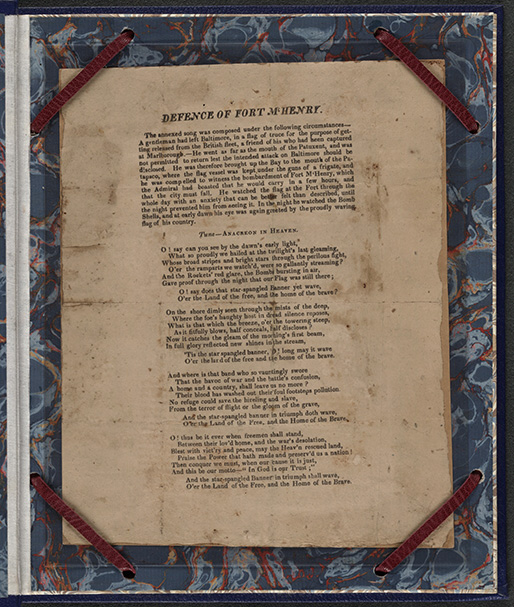Area connections to the Star-Spangled Banner
by James Rada, Jr.

Frederick County native Francis Scott Key was a lawyer, who is not remembered for his legal expertise, but for a poem he wrote.
In 1814, the War of 1812 was still raging. Some historians call it the second American Revolution. Less than a generation after America won her independence, she once again battled Great Britain. It was a war that neither side wanted because both countries were still recovering from the original American Revolution.
The British fought a defensive war early in the War of 1812 because they were also fighting against Napoleon Bonaparte and the French army and navy in Europe. By 1814, Britain defeated Napoleon and turned her attention to ending the war with the United States. Up to this point, most of the fighting had been around the Canadian and U.S. border to the north. In the mid-Atlantic, the British started a blockade in 1813. British troops invaded and burned Washington in August 1814.
On September 7, 1814, Key and Col. John Stuart Skinner sailed to the British ship HMS Tonnant near Baltimore under a flag of truce. They dined with Vice Admiral Alexander Cochrane, Rear Admiral George Cockburn, and Major General Robert Ross, and they made the case for the release of Dr. William Beanes, a friend of Key’s and a prisoner of the British. The British had captured him after they had burned Washington and accused him of aiding in the arrest of British soldiers who had been pillaging homes as they left Washington.
The negotiations went well, and Beanes was released. He, Key, and Skinner were allowed to return to their ship, but they weren’t allowed to leave the British fleet for a time. They had learned too much about the fleet strength and intended British attack on Baltimore.
So, Key wound up watching the 25-hour bombardment of Fort McHenry from dawn on September 13 until the morning of September 14.
At dawn on September 14, he saw the large American flag still waving over the fort, and it inspired him to write a poem on the back of a letter he had in his pocket.
The Americans were released on September 16, and Key finished the poem at the Indian Queen Hotel. He did not title it or sign it. It was given the name “The Defence of Fort M’Henry” when he published it as a broadside.
However, the National Songster of 1814 published “The Defence of Fort M’Henry” that year as a song. This Hagerstown publication, owned by the Hagerstown Town and County Almanack, was the first place to publish what would eventually become our national anthem.
The almanac’s website notes, “is that though it appeared in many songsters, the VERY FIRST appearance of the poem as a song under the title, ‘Defence of Fort M’Henry’, was in ’The National Songster’, Hagerstown, Maryland in 1814 with the direction that it be sung to the tune of To Anacreon of Heaven. This publication was the product of John Gruber, founder of The Hagerstown Town and Country Almanack! This has been corroborated by many bibliographies of American Songsters from 1734 to 1820.”
As the song was reprinted in publications across the country and gained popularity, it was renamed “The Star-Spangled Banner.” By the time of the Mexican-American War, it was often sung as the unofficial national anthem.
Congress made things official in 1931, and President Herbert Hoover signed it into law.
John Gruber owned both the National Songster and the Hagerstown Town and County Almanack, which is the second oldest almanac in the country. The almanac is still published and sold by descendants of its founder.

